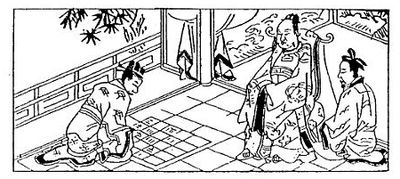By: Tao Steven Zheng (郑涛)
In the past three decades, the thermodynamics of black holes has provided much insight into the fundamental nature of space-time, as well as the information theory of our universe. Black holes lack many physical features commonly associated with the thermodynamics of matter (i.e. stars). Unlike material objects, there are only three characteristics of a black hole: mass, angular momentum, and electric charge. In gravitational physics, this is known as the no-hair principle. Mass is intrinsic to all black holes. Electric charge is associated with the Reissner-Nordstrom and Kerr-Newman black holes. Angular momentum is associated with the Kerr and Kerr-Newman black holes. In this paper we will focus on the thermodynamic attributes of rotating black holes. Furthermore, we will outline the energy extraction of a rotating black hole via the Penrose process.
Thermodynamic Attributes[]
The lackluster constitution of a black hole greatly differentiates its thermal properties from other physical systems. The statistical quantities energy and volume suffices in the description of thermal processes of ordinary matter. What is important about these statistical quantities is that both can be partitioned. However, the energy of a black hole cannot be partitioned, nor does it possess a volume (a black hole is a 2-sphere). Thus, all information associated with a black hole is distributed on the event horizon, which is a spherical surface. Despite the clear differences between black holes and ordinary matter, black holes do exhibit certain thermodynamic laws that are closely analogous to that found in ordinary matter.
Zeroth Law
It is not possible to form a black hole with vanishing surface gravity.
First Law
As regimented by the no-hair principle, the change of energy is related to the change of area, angular momentum, and electric charge.
• energy (also mass-energy)
• surface gravity
• area of the event horizon
• angular velocity
• angular momentum
• electrostatic potential
• electric charge
Second Law [*]
The horizon area is a non-decreasing function of time.
[*] The second law of black hole thermodynamics was disproved by Hawking radiation, which causes both the mass and the horizon area of a black hole to decrease over time.
Third Law
It is not possible to form a black hole with vanishing surface gravity.
Temperature and Entropy
Stephen Hawking and Jacob Bekenstein derived two interesting results on the temperature , and the entropy of a black hole. The temperature is proportional to the surface gravity of a black hole:
The entropy is proportional to the horizon area of a black hole:
Penrose Process[]
The ergosphere is a characteristic region of rotating black holes. This region contributes to the energy extraction of a rotating black hole via the Penrose process (suggested by Roger Penrose), a result in accordance to classical thermodynamics. The Penrose process begins with matter gravitating towards a black hole. Subsequently, the matter will be dragged within the rotating ergosphere. Once the matter enters the ergosphere, it will separate into two parts: one part will escape to infinity, while the other falls past the event horizon of the black hole. In result, an observer at infinity would notice that the escaping matter possess positive mass-energy, and the in-falling piece possess negative mass-energy. Consequently, the black hole experiences a decrease in angular momentum, which is converted to the extracted energy. This gradual reduction of angular momentum would eventually convert a rotating black hole into a stationary (Schwarzschild) black hole.















